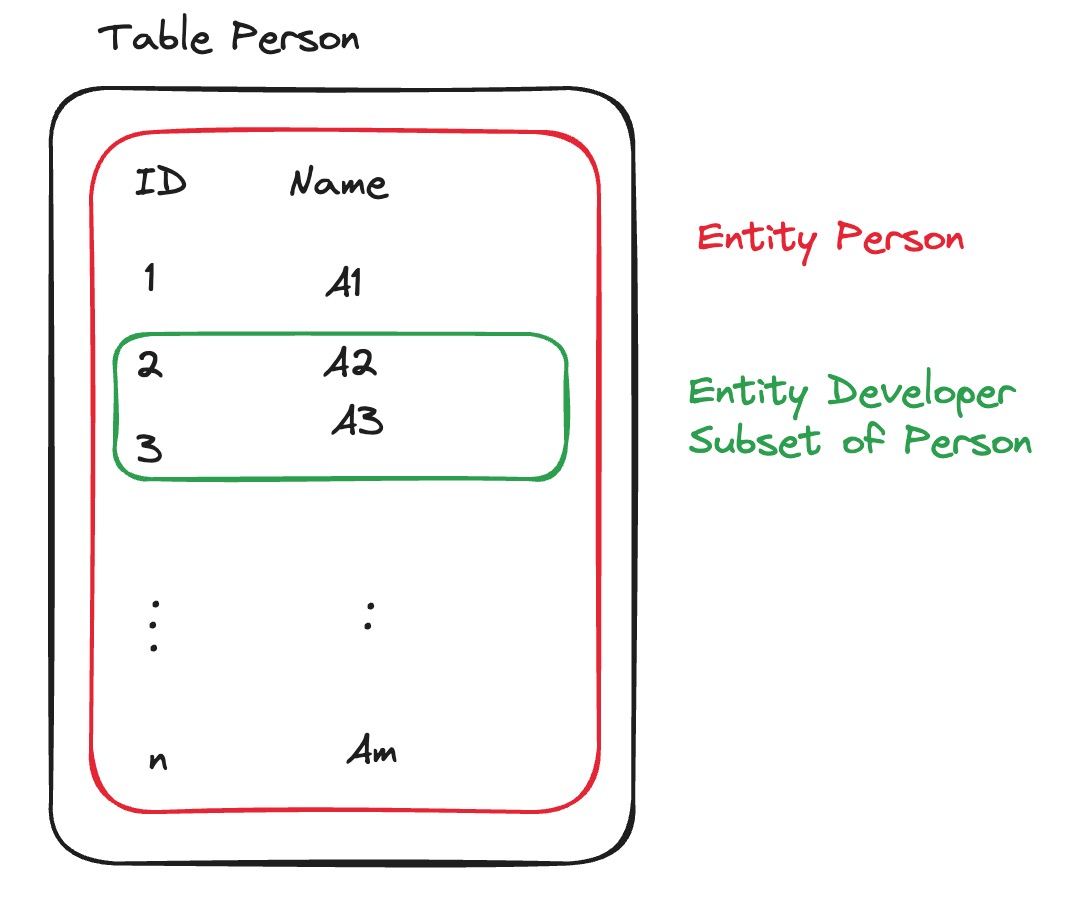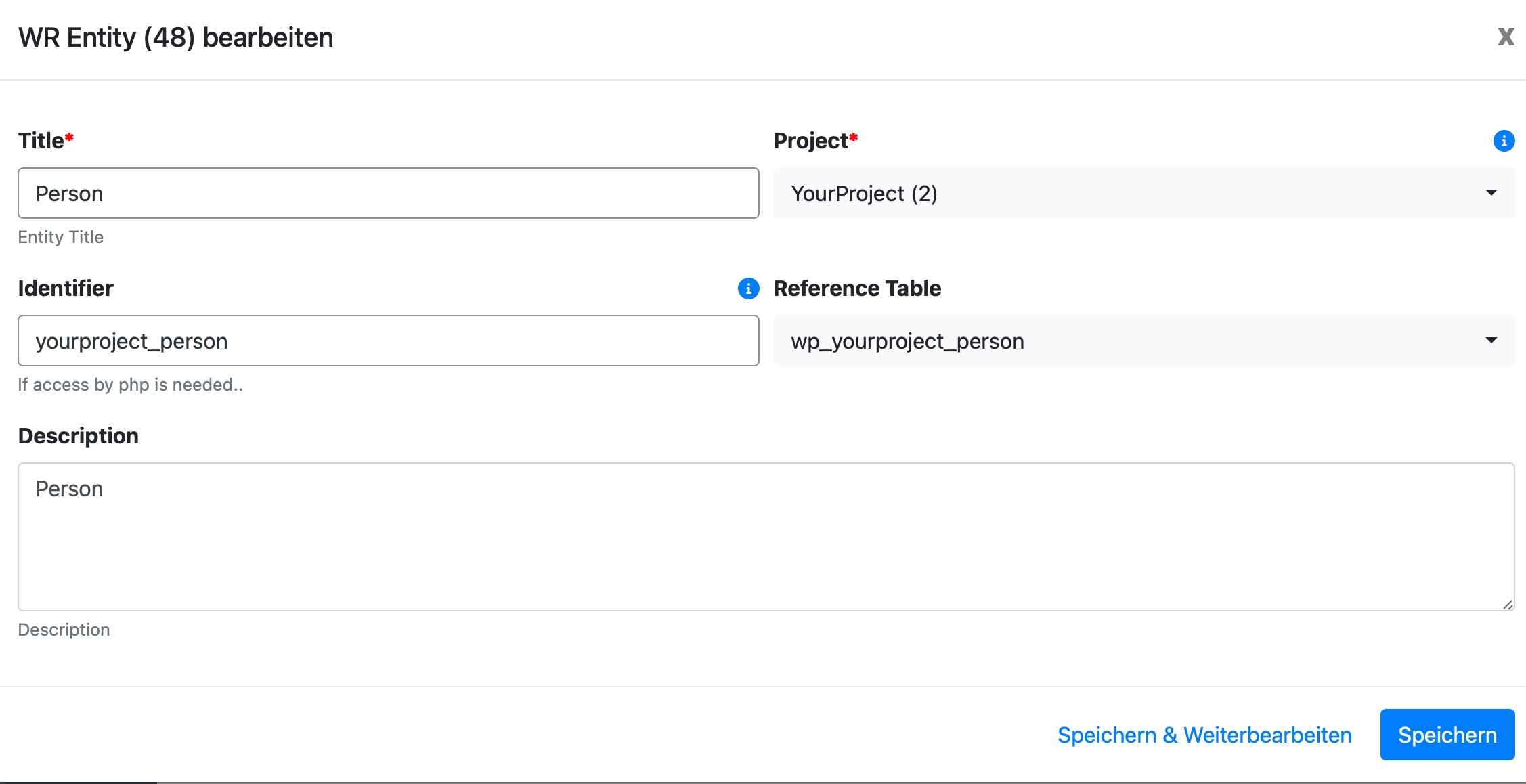Purpose
In relational databases, data is typically structured into tables with defined relationships. However, complex relationships—such as many-to-many (n:n) connections - require intermediate tables to maintain these links.

To model these relationships, a traditional database table structure would require. Additionally, inserting, updating, and deleting entries becomes increasingly complex as data connections grow.

This concept works for basic relationships but in many real-world use cases we need more than just a simple n-n connection — we need contextual information about the relationship itself.
Expanding the Concept: Adding Additional Information
Consider the scenario where people are associated with companies, but with different roles:
- Person A is a Develop in Company A
- Person B is a Designer in Company A
Introducing Entities - A Wonderful-Relations Approach:

Entities in Wonderful Relations simplify this process by allowing subsets of data to be logically separated while still being stored within the same table.

But when it comes to connecting data, the built-in link table handles everything seamlessly—no need to manage intermediate tables, ID columns, manual updates, or complex maintenance.
As a wonderful relations developer, you don’t have to write INSERT, UPDATE, or DELETE queries for managing relationships—Wonderful Relations takes care of everything automatically. The standardized table structure ensures that links are created, updated, and removed without any extra effort, making Entity one of the core concepts that makes Wonderful Relations so powerful. 🚀
Visual Example

Parameter
Titel
Defines the name of the entity, used for display purposes in forms, queries, and linked records
Project
Associates the entity with a specific Wonderful Relations Project, ensuring it is part of the correct data environment.
Identifier (Optional)
A unique key that allows the entity to be referenced programmatically.
Reference Table (Optional)
The database table that holds the data for this entity.
Description (Optional)
A short text description explaining the entity’s purpose and role within the system.
